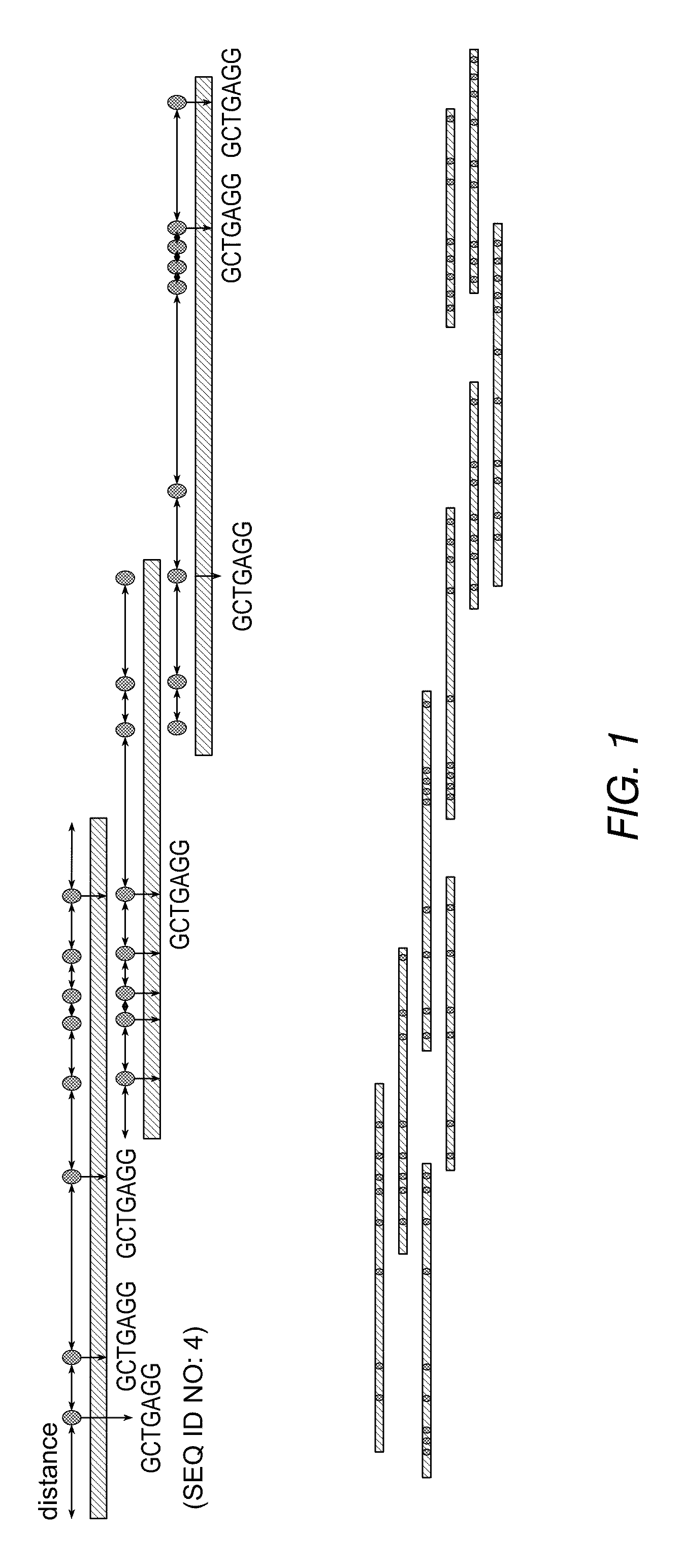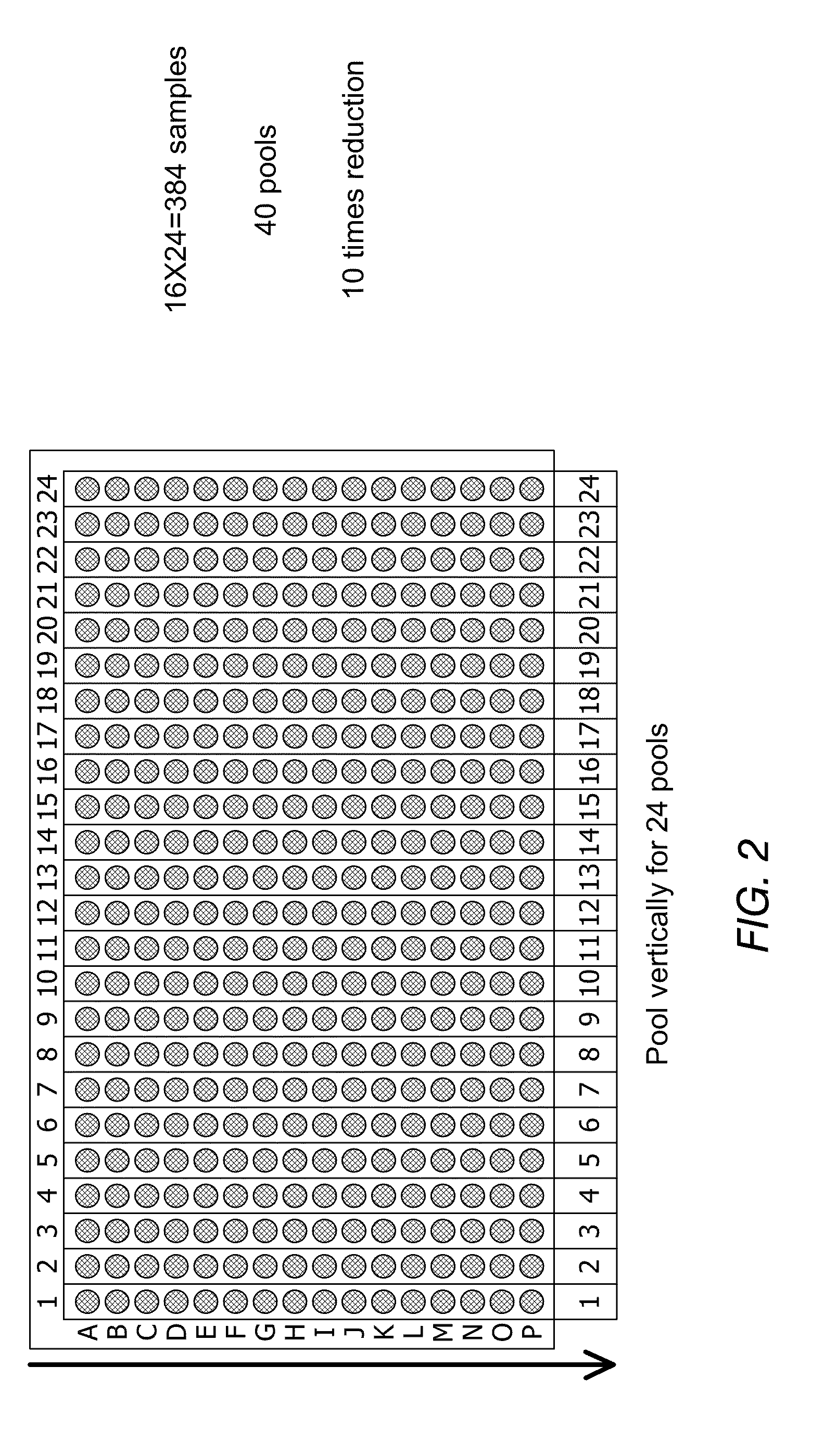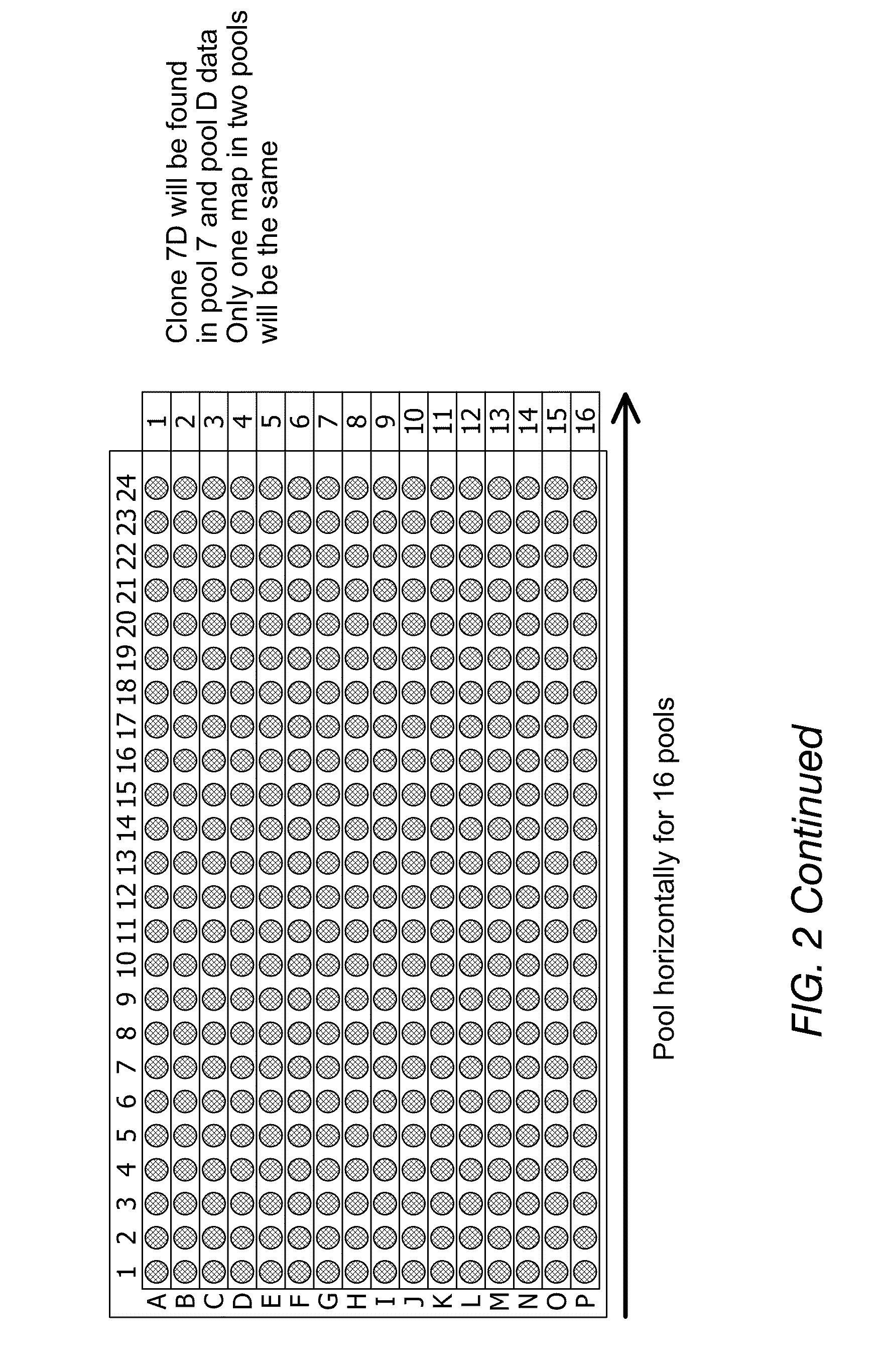Physical map construction of whole genome and pooled clone mapping in nanochannel array
a nanochannel array and whole genome technology, applied in the field of nucleic acid analysis, can solve the problems that the lack of high-quality physical maps can quickly become one of the limiting factors in assembling newly generated wgs sequences for large genomes, and achieve the effect of high throughpu
- Summary
- Abstract
- Description
- Claims
- Application Information
AI Technical Summary
Benefits of technology
Problems solved by technology
Method used
Image
Examples
example 1
Efficient and Sequence-Specific Fluorescent Labeling
[0106]This example illustrates a non-limiting example showing a nick-flap labeling scheme for labeling sequence specific motifs on double-stranded DNA molecules and maintain the integrity of the double-stranded DNA.
[0107]In the nick-flap labeling scheme, hybridization probes capable of recognizing any sequences across the whole genome on ds-DNA molecules under non-denaturing conditions can be used. See Xiao et al., Nucleic Acids Res., 35(3), e16 (2007), which is expressly incorporated herein by reference. As described in Morgan et al., Biological Chemistry, 381: 1123-1125 (2000), the nicks can be introduced in double-stranded DNA at specific sequence motifs recognized by nicking endonucleases, which cleave only one strand of a double-stranded DNA substrate. In the direct nick-labeling scheme, fluorescent dye nucleotides can be directly incorporated by DNA polymerase extension, which indicates the presence of nicking endonuclease re...
example 2
Pooled Bacterial Artificial Chromosome (BAC) Clone Mapping
[0110]This non-limiting example shows how a pooled clone mapping strategy was used to improve the throughput of DNA analysis utilizing the high capacity of nanochannel arrays.
[0111]Cultures of 50 individual BAC clones were grown and mixed together to make one DNA preparation. After obtaining the mixture of clone DNA samples, nick-labeling was performed and the optical maps of DNA mixtures were obtained in a high-throughput fashion (FIG. 6). The individual clone maps were extracted by a clustering method. FIGS. 7A-B show a few clusters of individual clones extracted from the mixture of 50 clones. In general, two clusters were formed for each BAC clone as the clone can enter the nanochannel in either orientation.
[0112]Using the pooled clone mapping strategy, each individual BAC clone was distinguished from each other in a mixture of 50 BAC clones.
example 3
Physical Map Construction
[0113]A library of BAC clones containing fragments of a genomic DNA is provided. The BAC clones are mixed together to form a pool. The fragments of the genomic DNA are isolated from the pool, labeled and analyzed using nanochannels. The distances between labels on the fragments of the genomic DNA are monitored and recorded to obtain the consensus map of each DNA fragment carried in the individual BAC clone. After the consensus map of the genomic DNA fragment from each individual BAC clone is obtained, the consensus maps of individual clusters are joined to form a complete physical map of the genomic DNA computationally. A non-limiting map of four overlapping BAC clones is shown in FIG. 8.
PUM
| Property | Measurement | Unit |
|---|---|---|
| diameters | aaaaa | aaaaa |
| diameter | aaaaa | aaaaa |
| length | aaaaa | aaaaa |
Abstract
Description
Claims
Application Information
 Login to View More
Login to View More - R&D
- Intellectual Property
- Life Sciences
- Materials
- Tech Scout
- Unparalleled Data Quality
- Higher Quality Content
- 60% Fewer Hallucinations
Browse by: Latest US Patents, China's latest patents, Technical Efficacy Thesaurus, Application Domain, Technology Topic, Popular Technical Reports.
© 2025 PatSnap. All rights reserved.Legal|Privacy policy|Modern Slavery Act Transparency Statement|Sitemap|About US| Contact US: help@patsnap.com



